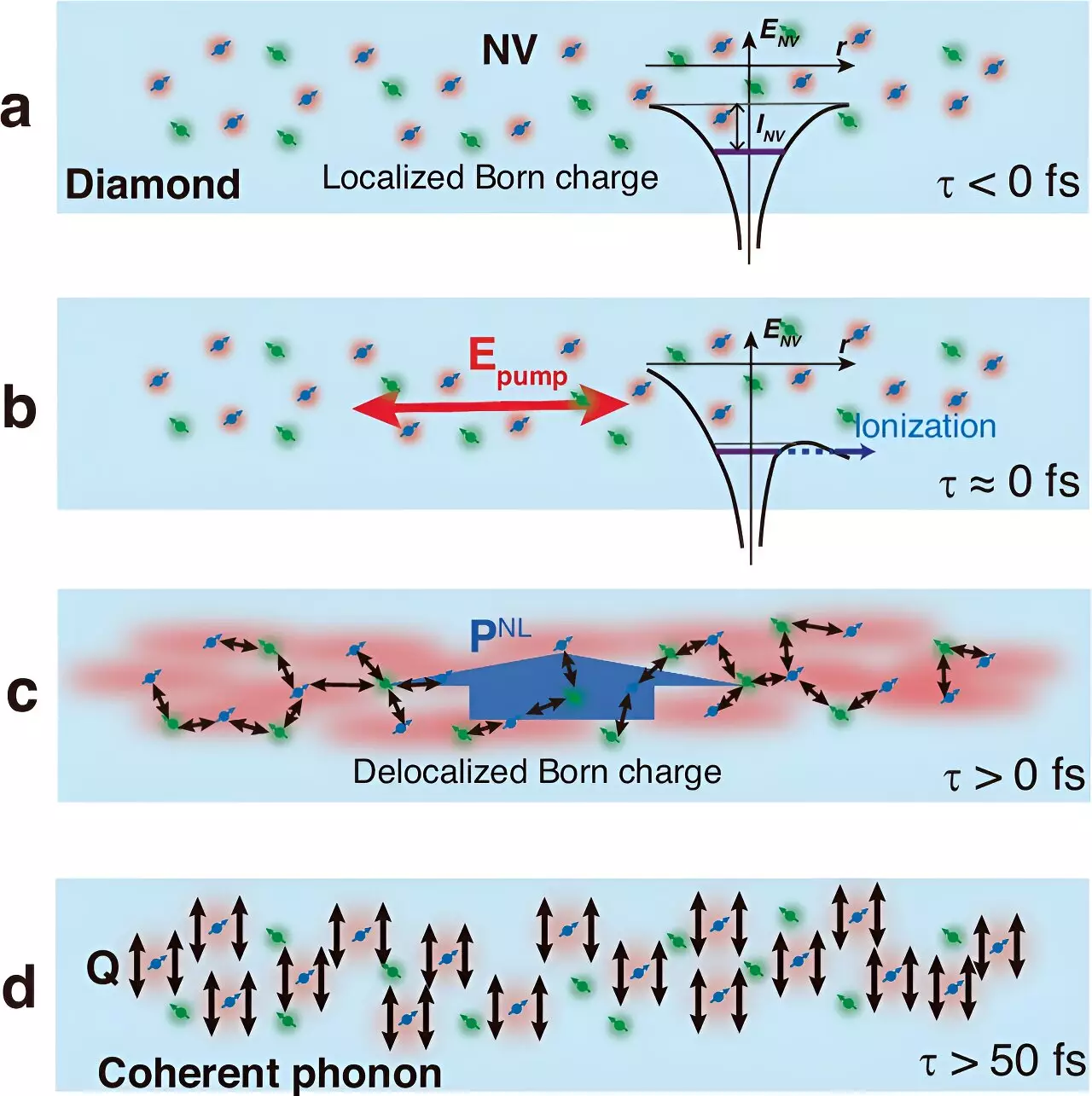A recent investigation by a team from the University of Tsukuba has unveiled groundbreaking insights into the behavior of polaron quasiparticles, specifically within the context of diamond crystals. By harnessing ultrashort laser pulses to analyze the behavior of these quasiparticles associated with electrons and lattice vibrations around color centers, researchers have made significant strides in understanding these complex interactions. The implications of this research extend far beyond theoretical physics as it opens up new avenues for advancing quantum sensing technologies.
Understanding Color Centers and NV Centers
Central to this study is the formation of nitrogen-vacancy (NV) centers within diamond crystals. NV centers, created by substituting a carbon atom with a nitrogen atom while simultaneously introducing a vacancy, serve as critical color centers influencing the optical properties of diamonds. These lattice defects do not only impart unique coloring but also exhibit remarkable sensitivity to external conditions, such as temperature fluctuations and magnetic fields. Such sensitivity stems from the ability of the NV center’s quantum state to respond dynamically to these changes, presenting vast potential for application in high-resolution sensors used in quantum technologies.
The study further explores the interaction of electrons within NV centers and the accompanying lattice vibrations, commonly referred to as phonons. Traditionally, the theory posited the existence of Fröhlich polarons—a quasiparticle model theorized nearly 70 years ago—as an unlikely phenomenon in diamond substrates. However, this research provided compelling evidence of Fröhlich polarons resulting from the dynamics of NV centers, thereby challenging existing assumptions within materials science. The findings illustrate how neighboring lattice vibrations significantly amplify the amplitude of resultant vibrations, thus unveiling a mechanism by which the electrons interact harmoniously with their surrounding environment.
A noteworthy aspect of the research methodology includes the use of nanosheets with density-controlled NV centers, allowing for intimate interaction with high-purity diamond surfaces. This design not only facilitated meticulous observations but also presented an opportunity to quantify changes in charge distribution among the NV centers. Researchers utilized first-principles calculations to derive insights into the behavior of these quasiparticles, revealing a complex interplay and biased charge distribution that had significant implications for their understanding of quasiparticle behavior within crystalline structures.
The emergence of Fröhlich polarons in NV centers redefines the potential for their utilization in quantum sensing. These findings suggest that exploiting the unique characteristics of polarons can lead to the development of sophisticated sensors that possess both high sensitivity and spatial resolution. As researchers continue to unravel the complexities of electron-lattice interactions, the potential for enhanced quantum technologies appears promising, potentially impacting fields ranging from quantum computing to materials science.
In essence, the research conducted by the University of Tsukuba not only sheds light on the fundamental properties of polarons and NV centers but also paves the way for innovative applications in quantum sensing technologies. By reconceptualizing our understanding of electron interactions in novel materials, this study opens new horizons in the quest for advanced sensory systems, reaffirming the enduring significance of diamonds in modern scientific exploration.


Leave a Reply